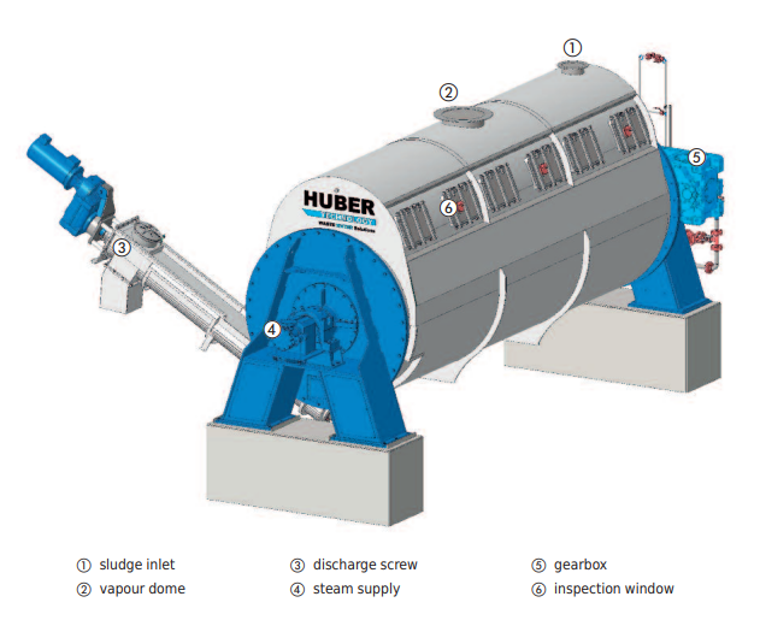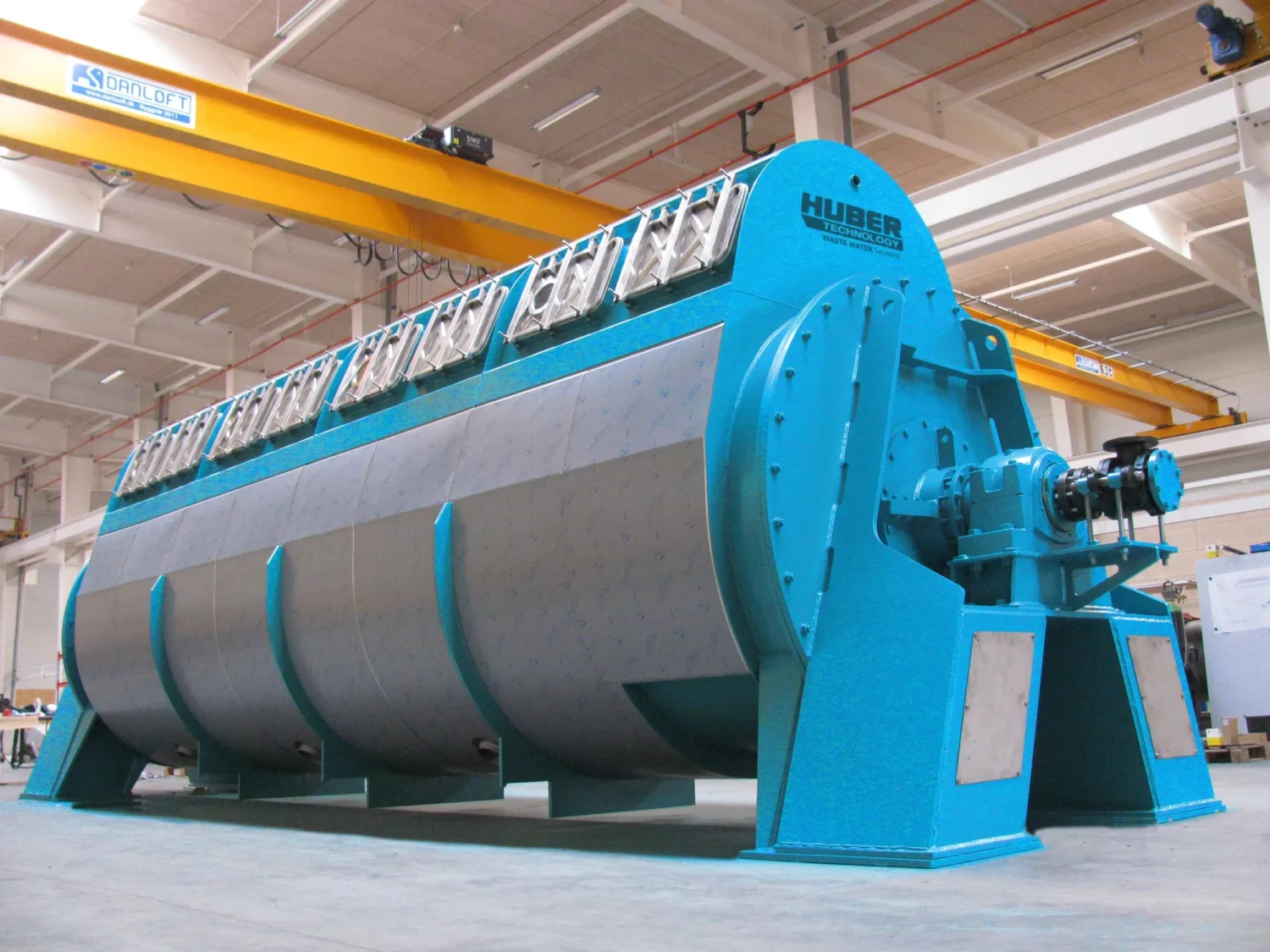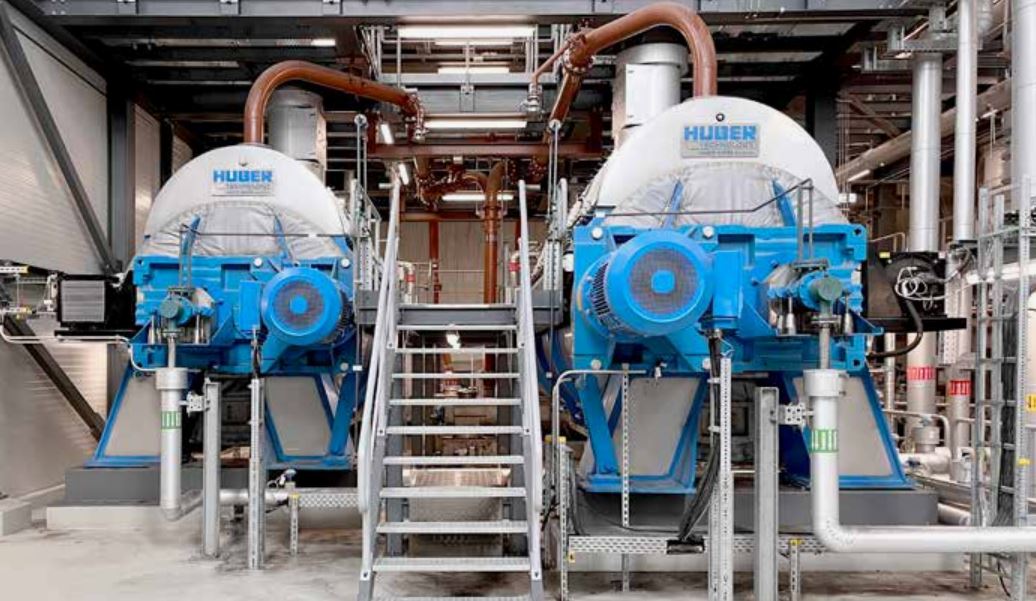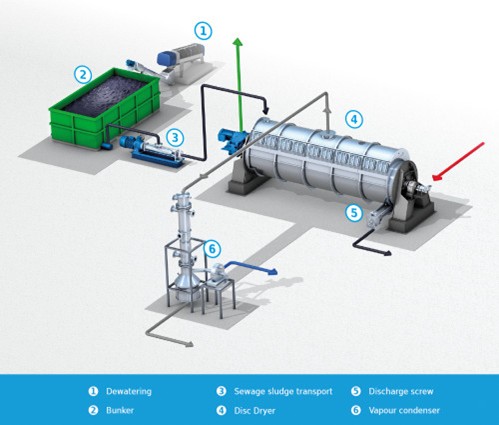
HUBER Rotary Disc Dryer
Efficient Low Temperature Sludge Drying Process with the HUBER RotaDry® System
A HUBER Rotary Disc Dryer® is installed to reduce sludge volume, lower disposal costs, and produce Class A biosolids suitable for agricultural reuse. It uses an energy-efficient, low-temperature drying process, often powered by waste heat, to minimise energy consumption. The system is compact, fully automated and effectively controls odours while ensuring compliance with environmental regulations. This makes it an ideal solution for wastewater treatment plants seeking cost-effective, sustainable sludge management.
General Overview
The HUBER Disc Dryer RotaDry is specifically designed for the efficient partial drying of dewatered sewage sludge. Its compact design and high water evaporation capacity make it an ideal solution for new sewage sludge mono-incineration plants, as well as for increasing the capacity of existing facilities. The dryer can precisely adjust to the required dry solids content, enabling self-sustaining combustion in a fluidised bed incinerator.
The RotaDry is available in various sizes, with water evaporation capacities ranging from approximately two to six tonnes per hour per dryer. By varying the disc diameter and the number of discs, the heating surface can be customised to match sludge production, ensuring optimal performance across different operational demands.
Drying heat is supplied efficiently, with the option to generate electricity via a steam turbine, depending on plant size. Key features include a reliable condensate removal system, advanced moisture control, optimised sludge feeding, and a steam control line designed to minimise pressure loss.
The HUBER Disc Dryer RotaDry® is available with optional jacket heating, making it a reliable and adaptable solution for sludge drying in mono-incineration plants.

Main Features and Benefits
Compact Design: The HUBER Disc Dryer RotaDry® features a space-saving design, allowing for easy installation in tight spaces or integration into existing plants.
Proven, Durable Technology: Decades of successful operation in sewage sludge incineration plants demonstrate the reliability and robustness of the disc dryer technology.
High Water Evaporation Efficiency: Heated rotor discs and optional jacket heating deliver a high water evaporation capacity, optimising drying performance.
Maintenance-Friendly Operation: Automatic grease lubrication and a low-maintenance direct drive reduce operational effort for plant personnel.
Extended Service Life and Reliable Operation: Special welded disc construction extends rotor lifespan, while an innovative condensate drainage system ensures smooth, uninterrupted performance.


Operation
Sludge is transferred from the sludge bunker to the dryer using a multistage pump, which feeds the material through an opening in the main dryer body. Inside the dryer, a series of hollow discs, welded to a central rotor, facilitate the drying process. Saturated steam circulates through these discs, raising the internal temperature. The steam is sourced from a turbine that generates electricity using heat produced during combustion. Before entering the dryer, the steam is conditioned to ensure it enters the rotor as saturated steam. As the steam travels through the discs, it reaches its condensation temperature at the disc surfaces.
The rotor is powered by a three-phase geared motor, with its speed regulated by a frequency converter. Dewatered sludge typically enters the dryer with a dry solids content of 15 to 30% w/w. As the internal temperature increases, the evaporation rate rises, resulting in drier sludge. The partially dried sludge, with a dry solids content of 40 to 45%, exits the dryer via a discharge screw.
A vapour dome captures the water vapour produced during the drying process. The heat within this vapour is recovered using a condenser and can be redirected into the heating network or used to pre-heat sludge before dewatering. The condensate from this process undergoes treatment, as it contains high levels of particulate and dissolved COD, along with elevated ammonium content due to the high disc surface temperatures.
The condensate treatment system employs filtration, adsorption, and stripping processes to treat the wastewater stream before it is returned to the main sewage flow at the inlet works.

Models and Capacities
The RotaDry is available in various sizes, with water evaporation capacities ranging from approximately 2-6 tons per hour per dryer. By varying the disc diameter and the number of discs, the heating surface can be customised to match sludge production, ensuring optimal performance across different operational demands.
| RotaDry | 18/54 | 20/50 | 20/64 | 22/64 |
| Max Water Evaporation (kg/h) | 3,300 | 4,000 | 5,000 | 5,700 |
| Disc Diameter (m) | 1.8 | 2.0 | 2.0 | 2.2 |
| Number of Discs | 54 | 50 | 64 | 64 |
| Dewatered Sludge Throughput (kg/h) | 9,000 | 10,500 | 13,200 | 15,400 |
Note – capacities are guide values; consult Hydroflux Epco for specific details
Contact Hydroflux Epco for an initial technical discussion
Sludge drying is becoming an increasingly important aspect of wastewater treatment as municipalities and councils seek more efficient and sustainable methods for managing waste. Hydroflux Epco, with our extensive expertise and technical know-how, are at the forefront of this shift, offering advanced sludge drying solutions tailored to meet evolving industry demands.
Get in touch with Hydroflux Epco today to find out how we can help streamline your sludge drying process.
Huber Disc Dryer RotaDry FAQs
The RotaDry® disc dryer can be used in existing plants as well as for the new construction of a sewage sludge incineration plant. The sludge to be dried must comply with the HUBER sewage sludge specification for the disc dryer. Ideally, it should be well-stabilised municipal sewage sludge.
Incorporated into a sewage sludge mono-incineration system, the disc dryer shows its full strength. The sewage sludge is dried in the disc dryer to such an extent that it can be autothermally processed in the fluidised bed incinerator. The steam produced is used to heat the dryer.
Downloads
Download the HUBER RotaDry Disc Dryer Brochure here
